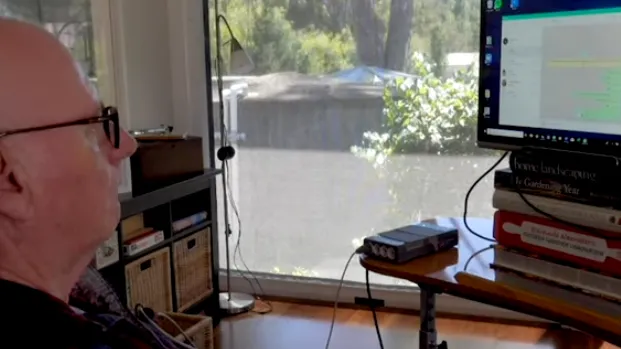Studies for the year-long human trials of the Synchron Switch implant appear positive.
The brain-computer interface isn't a new concept: the idea's been floating around since early '70s sci-fi, anticipating a future where we can control computers and machines with just a thought. (opens in new tab) However, one company's approach to BCIs doesn't involve the expected intensive brain surgery and is meant to allow people today with disabilities to text message or use social media to communicate with friends and family.
The Synchron Switch is inserted through blood vessels and works its way to the vein next to your brain's motor cortex; the stent is outfitted with tiny sensors that collect 'raw brain data,' which connect to an antenna implanted under the skin of the chest.
CNBC (opens in new tab) reports that the Sychron Switch has been used on seven patients (four Australian, three American) over the past year.
CEO of Synchon, Tom Oxley, told CNBC in an interview that he's "seen moments between patient and partner, or patient and spouse, where it’s incredibly joyful and empowering to have regained an ability to be a little bit more independent than before." He also stated that technology helps its recipients "engage in a way that we take for granted."
Over a year ago, a patient with ALS and limited hand mobility could fire out a tweet on the CEO's account with just his mind after having the Synchron Switch implanted. Oxley said patients could also use the technology to shop online, manage finances, and, most importantly, text message.
The Syncron Switch is meant to be less invasive than other BCIs like Elon Musk's Neuralink, which requires a microchip the size of a coin to be implanted inside the brain tissue, and the surgery can only be performed by a neurosurgeon. Synchron's director of neuroscience, Peter Yoo, told CNBC that its device isn't directly inserted into the brain (so the signal isn't always perfect, admittedly), and more surgeons can perform the procedures.
The year-long human trials for Synchron's BCI system have been peer-reviewed by a neuroscience medical journal in Australia (opens in new tab), where the study found the technology safe and signal quality didn't degrade for its Australian patients. The study also concludes that "the favorable safety profile could promote wider and more rapid translation of BCI to people with paralysis." We'll give it about another year before someone's running Doom on it.
- Karlston
-

 1
1



Recommended Comments
There are no comments to display.
Join the conversation
You can post now and register later. If you have an account, sign in now to post with your account.
Note: Your post will require moderator approval before it will be visible.